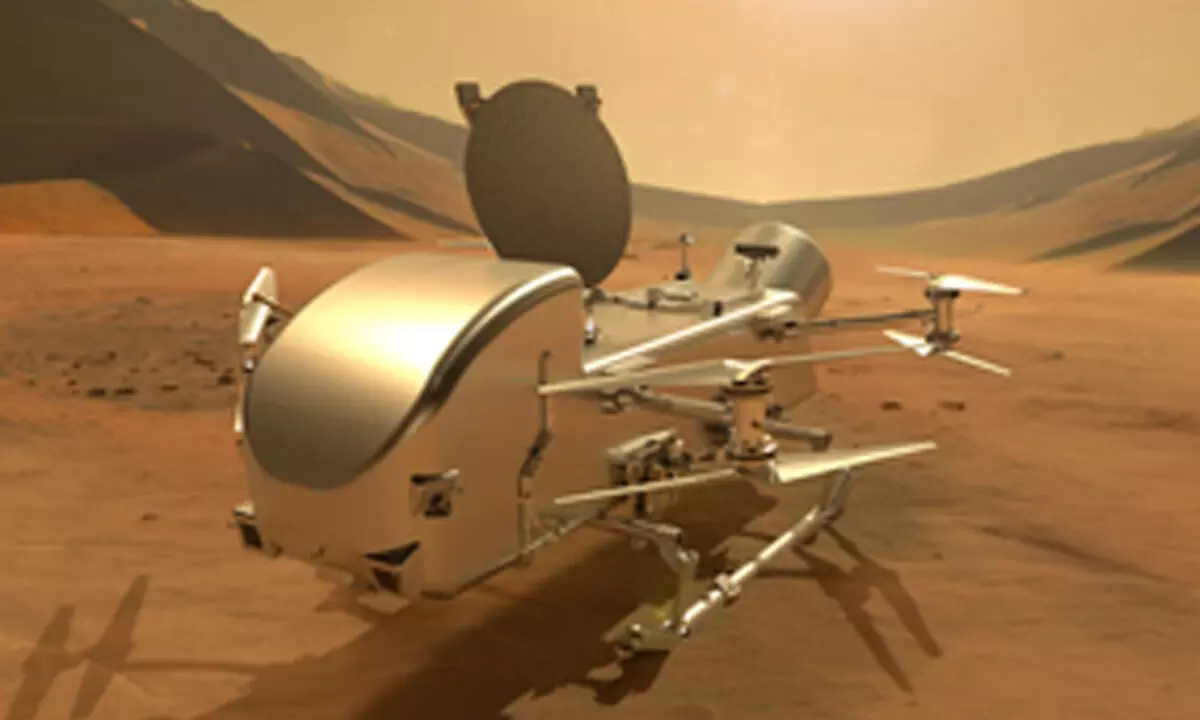NASA building nuclear-powered lander for Saturn's moon Titan
Share :

NASA is building a nuclear-powered lander for exploring Titan -- Saturn’s largest moon having a dense atmosphere and low gravity
Washington: NASA is building a nuclear-powered lander for exploring Titan -- Saturn’s largest moon having a dense atmosphere and low gravity
Titan is a major target in NASA’s quest to assess habitability and search for potential signs of life beyond Earth on worlds across the solar system.
The lander, Dragonfly rotorcraft, is NASA’s only mission to the surface of another ocean world. Titan is also thought to have a subsurface ocean of water.
The car-sized drone, built and operated by Johns Hopkins Applied Physics Laboratory (APL) in Maryland, will have four pairs of coaxial rotors (meaning one rotor is stacked above the other) and will slice through Titan’s dense, nitrogen-rich atmosphere.
It will be equipped with cameras, sensors and samplers to help examine swaths of Titan known to contain organic materials that may have come in contact with liquid water beneath the organic-rich, icy surface.
Dragonfly’s flight systems has so far undergone four testing in the past three years at NASA’s Langley Research Center in Virginia.
“We tested conditions across the expected flight envelope at a variety of wind speeds, rotor speeds, and flight angles to assess the aerodynamic performance of the vehicle,” said Ken Hibbard, Dragonfly mission systems engineer at APL, in a blogpost.
“We completed more than 700 total runs, encompassing over 4,000 individual data points. All test objectives were successfully accomplished and the data will help increase confidence in our simulation models on Earth before extrapolating to Titan conditions.”
According to Rick Heisler, the Dragonfly wind tunnel test lead from APL, each trip to NASA Langley has given the team a chance to hone its technical models and designs and gain a better idea of how Dragonfly’s rotors will perform in Titan’s exotic atmosphere.
“The data we acquire are used to validate predictions of the lander aerodynamics, aero-structural performance and rotor fatigue life in the harsh cryogenic environment on Titan,” Heisler said, in the blogpost.
Dragonfly is currently scheduled to launch in 2027. If all goes according to plan, it will reach the ocean world, Saturn's largest moon, by 2034.
“With Dragonfly, we’re turning science fiction into exploration fact,” Hibbard said. “The mission is coming together piece by piece, and we’re excited for every next step toward sending this revolutionary rotorcraft across the skies and surface of Titan.”
















